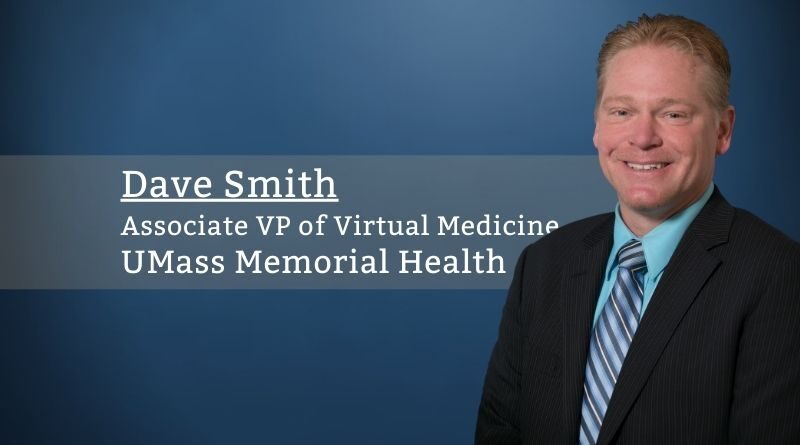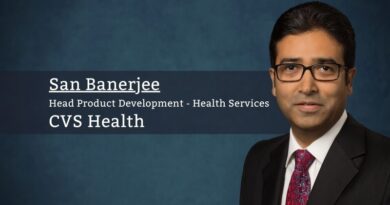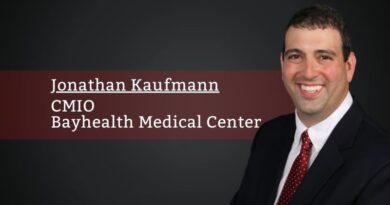How Technology is Changing the Face of Healthcare
By Dave Smith, Associate VP of Virtual Medicine, UMass Memorial Health
None of us will forget the chaos that COVID-19 unleashed on our daily lives and routines. For years to come, humanity will study the immeasurable impact on our physical health, emotional wellbeing, and socioeconomic disparities and how these factors will change the face of healthcare for good. Of the countless tragedies this plague thrust upon us, one thing it did in a positive way was foster innovation. Particularly in healthcare, an industry that needed a figurative – and literal – shot in the arm.
Technology has long played a role in healthcare, from the first EKG transmitted by telephone in the early 1900s to today’s explosion of mobile apps, online visits, and mHealth solutions. Factor in emerging high-tech like AI, and our dependency on the digital ecosystem for quality and efficiency becomes even more apparent. Everyday technologies like smartphones and step trackers have become conduits for digital engagement, uniting patients and caregivers across geographic boundaries. High-demand, high-volume specialties such as behavioral health and dermatology are primed for growth in a market that is quickly adapting to this new paradigm in healthcare delivery. It is time to adapt our practices to those of what a consumer-savvy population expects: convenience, access, choice, value, and a positive overall experience. Instead of being compared to the clinic down the street, we are now being compared to Amazon.com.
I classify telehealth technologies into five general categories:
Interactive Video tends to be the most familiar use of technology in healthcare. Simply real-time audio/video interaction between the patient and care provider, or among two or more providers. This is key to programs such as telestroke, where visually assessing the patient’s motor skills and facial expressions are vital to performing the physical exam and remote diagnosis. Synchronous interactive video is most useful in cases where the onsite care team cannot provide emergency specialty care.
Store and Forward technologies are characterized as being asynchronous, meaning the exchange and evaluation of medical information does not necessarily occur in real-time. Specialties such as radiology and dermatology leverage this medium to receive non-emergent information for remote diagnoses and extend their expertise to areas where related services may be limited.
Remote Patient Monitoring, or RPM, can occur asynchronously or in real-time, as is the case with programs like teleICU. RPM typically involves the transmission of data, such as vital signs or blood glucose levels, which is then used to evaluate the condition of the patient. This may allow for corrective actions in-between regular office visits to assist with the management of a chronic illness such as CHF or diabetes. It also serves as the cornerstone for many home health programs and is increasingly more prevalent in wearable technologies.
mHealth, short for mobile health, represents the practice of medicine supported through mobile technology. This encompasses the use of telecommunication and multimedia tools such as smartphones, wearables, and remote monitoring devices. Practical applications include mobile devices to collect clinical data, deliver health information to caregivers, real-time monitoring of vital signs, and direct provision of care. The explosion of mHealth is evidence of the shift in traditional care delivery models to more consumer-driven and patient-centric.
Predictive Analytics / Artificial Intelligence (AI). The difference between predictive modeling and AI, or machine learning, is that predictive models depend on past data to foretell future events. On the other hand, AI not only uses historical data, but also makes assumptions about the data without applying a defined set of rules. This allows the software to learn and adapt to information patterns in more real-time. The utility of predictive analytics is well-suited for detecting the onset of sepsis, for example, where the data can lead to a predictable result. AI, however, is better suited for rapid detection of an anomaly, such as a large vessel occlusion in the brain, where the dataset may be incomplete.
Telehealth is creating disruptive innovation, compelling healthcare systems to adopt new delivery models to assure long-term sustainability.
Technology deployed effectively can address fragmentation, create value to reduce cost, drive innovation, and improve quality and satisfaction. Still, technology itself does not constitute a strategy. It is an instrument to gather data in the form of interactive video, image capture, electronic diagnoses, vital signs, and much more. But to be effective, data must become actionable information for the care team because the most relevant information combined with the right action at the right time almost certainly leads to better care.
Telehealth is not new to us. But demand for telehealth solutions is growing rapidly. We now face unprecedented competition in a rapidly changing healthcare marketplace. Telehealth is creating disruptive innovation, compelling healthcare systems to adopt new delivery models to assure long-term sustainability. Now more than ever, our ability to connect with patients is literally in the palm of our hands. The healthcare industry is flooded with tools and technologies that facilitate ease of access, convenience, choice, and remote monitoring capabilities. Boosted by a shift in consumer preference, there is little question that technology will remain a central component to nearly any telehealth strategy.
And yet, the traditional house call, known so well for generations of patients and doctors alike, is making its comeback by way of technology. Ever since the advent of radio in the early 20th Century, people have envisioned how advances in communication and technology could be applied to the practice of medicine. Today it is quickly evolving as a mainstream component of the care continuum, to the extent that the term “telehealth” should and will fade away. After all, it is simply health care enabled by technology.



